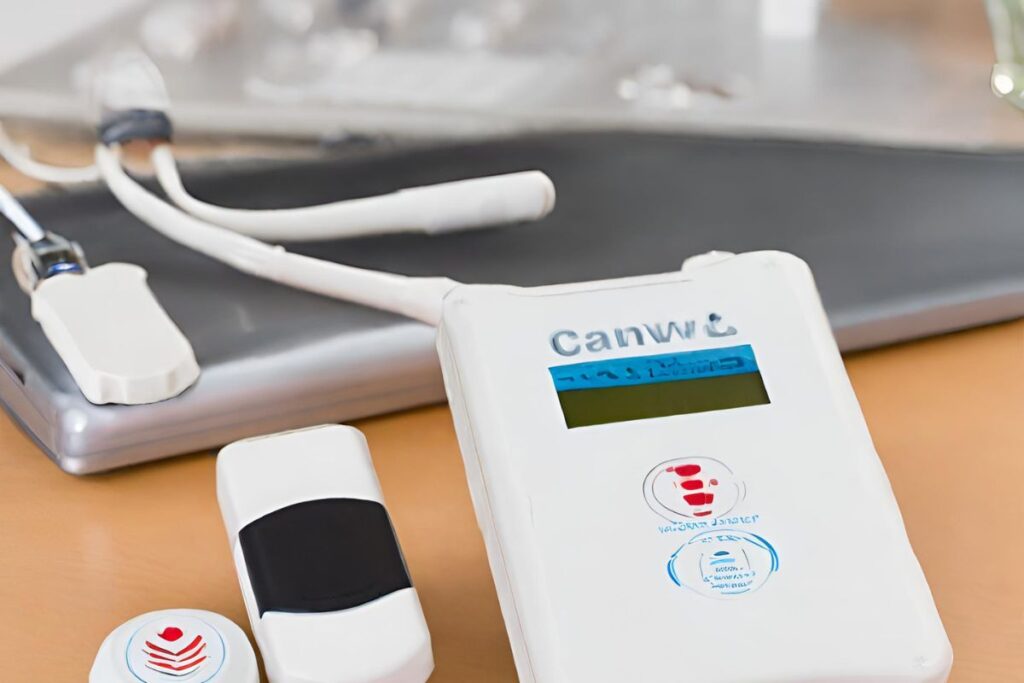As online shopping becomes more popular among seniors, understanding online safety is crucial. With the convenience of purchasing items from home, seniors are increasingly participating in this digital marketplace.
What are Online Threats
While shopping online is convenient, it’s essential to be aware of the online threats that exist. One common danger is phishing scams.
These scams often come in the form of emails or messages that appear to be from trusted sources. They try to trick you into providing personal information, like passwords or credit card details.
Another significant risk is malware and viruses. These harmful programs can infect your devices when you click on suspicious links or download unsafe files. Once installed, they can steal your information or damage your computer.
Lastly, there’s the threat of identity theft. This occurs when someone uses your personal information without your consent. They may open accounts in your name or make unauthorized purchases. Understanding these threats is the first step in protecting yourself while enjoying online shopping.
Secure Your Devices
Keeping your devices secure is crucial for safe online shopping. Here are some key actions you can take to protect yourself:
- Install Antivirus Software: This software helps detect and remove harmful programs from your device. Regular scans can catch threats before they cause damage.
- Regular Software Updates: Keeping your operating system and applications updated ensures you have the latest security patches. These updates fix vulnerabilities that hackers might exploit.
- Use Strong Passwords: Create unique passwords for each account. A strong password includes a mix of letters, numbers, and symbols. This makes it harder for others to guess.
By taking these steps, you enhance your device’s security and reduce the risk of falling victim to online threats while shopping. Stay safe and enjoy your online experience!
Safe Browsing Practices
Practicing safe browsing is essential for seniors to enjoy a secure online shopping experience. Here are some practical tips to help you stay protected:
- Recognize Secure Websites: Look for URLs that begin with https://. The ‘s’ indicates a secure connection. Check for a padlock icon in the address bar.
- Avoid Suspicious Links: Be cautious of links in emails or messages that seem too good to be true. Hover over links to see their true destination before clicking.
- Use a Secure Internet Connection: Avoid public Wi-Fi when shopping online. If necessary, use a Virtual Private Network (VPN) to encrypt your connection and keep your data safe.
By following these tips, you can help ensure your online shopping experience is both secure and enjoyable. Staying vigilant will make a significant difference in protecting your personal information.
Secure Payment Methods
When shopping online, choosing secure payment methods is crucial for seniors. One of the best options is to use credit cards instead of debit cards.
Credit cards often offer better fraud protection. If someone unauthorized uses your credit card, you can dispute the charges without losing your personal funds.
Another important aspect is to use trusted payment gateways. Look for familiar names like PayPal or Stripe. These platforms add an extra layer of security by encrypting your payment information and keeping it safe from hackers.
Finally, always check for secure payment symbols during checkout. Look for a padlock icon and ensure the URL starts with https://. This indicates that the website is using secure encryption to protect your transaction.
By following these practices, seniors can shop online with greater confidence, knowing their financial information is well-protected.
Recognizing Online Scams
As seniors navigate the online shopping world, it’s essential to recognize common scams. Here are a few prevalent tactics:
- Phishing Emails: These emails appear legitimate but aim to steal personal information.
- Fake Online Stores: Scammers create websites that look real but never deliver products.
- Too-Good-To-Be-True Offers: Deals that seem overly generous often lead to disappointment.
To protect yourself, watch for these red flags:
| Scam Type | Red Flags |
|---|---|
| Phishing Emails | Unusual sender addresses, urgent requests for personal info |
| Fake Online Stores | No contact information, poor website design |
| Too-Good-To-Be-True Offers | Prices significantly lower than competitors |
If you encounter a scam, report it to the appropriate authorities. This helps protect others and keeps the online shopping environment safer for everyone.
Protecting Personal Information
When shopping online, protecting your personal information is crucial. Here are some practical tips to help you maintain your privacy:
- Importance of Privacy Settings: Always check the privacy settings on your online accounts. Adjust them to limit who can see your information. This helps keep your data secure.
- Limit Personal Information Shared Online: Be cautious about the information you provide when creating accounts. Only share what is necessary, such as your name and email. Avoid disclosing sensitive details like your Social Security number unless absolutely required.
- Regularly Review Account Statements: Make it a habit to check your bank and credit card statements frequently. Look for any unauthorized transactions and report them immediately. This practice helps you catch potential fraud early.
By following these steps, you can significantly enhance your online safety and enjoy a more secure shopping experience.
Shopping from Reputable Sites
When shopping online, choosing reputable sites is essential for your safety. Here are some steps to help you verify site credibility:
Research Online Retailers: Before making a purchase, do a quick search on the retailer. Look for reviews and ratings on independent websites. This will give you a clearer picture of their reliability.
Importance of Customer Reviews: Customer feedback can be a goldmine of information. Pay attention to both positive and negative reviews. A pattern of complaints can indicate potential issues with the retailer.
Check for Physical Contact Information: Reputable retailers usually provide clear contact details. Look for a phone number or a physical address. If you can’t find this information, it may be a red flag.
By taking these steps, you can shop more confidently and reduce the risk of falling victim to scams.
Using Secure Networks
Using secure networks is crucial for safe online shopping. Public Wi-Fi may seem convenient, but it can expose you to various security threats. Here’s how to protect yourself:
- Avoid Public Wi-Fi for Transactions: Avoid making purchases or entering sensitive information while connected to public Wi-Fi. These networks are often unsecured, making it easy for hackers to intercept your data.
- Using VPNs for Added Security: A Virtual Private Network (VPN) encrypts your internet connection. This means your online activity remains private, even on public networks. Consider using a VPN for an extra layer of protection.
- Benefits of Home Network Security: Ensure your home Wi-Fi network is secure. Use strong passwords and enable encryption settings. A secure home network significantly reduces the risk of unauthorized access to your personal information.
By following these guidelines, you can shop online with greater confidence and protect your sensitive information.
Managing Digital Accounts
Maintaining your digital accounts is essential for safe online shopping. Here are key actions to help you manage your accounts effectively:
- Regularly Updating Passwords: Change your passwords every few months. This practice reduces the risk of unauthorized access. Use unique passwords for different accounts and avoid using easily guessable information.
- Enabling Two-Factor Authentication: This adds an extra layer of security. By requiring a second form of verification, such as a text message code, it makes it harder for someone to gain access to your accounts.
- Monitoring Account Activity: Regularly check your account statements and activity. Look for any unauthorized transactions or unusual behavior. Reporting suspicious activity quickly can help prevent further issues.
By following these simple actions, you can significantly enhance the security of your digital accounts while shopping online. Stay proactive to keep your information safe!
Educating Yourself About Online Safety
Staying informed about online safety is crucial for seniors. Knowledge empowers you to navigate the digital world with confidence. Here are some ways to educate yourself:
First, utilize reputable resources. Websites like FTC’s Online Security offer valuable tips and information. Additionally, organizations like AARP provide resources specifically for seniors.
Stay updated with recent threats by subscribing to newsletters or following blogs that focus on online security. Awareness of current scams will help you recognize and avoid them.
Finally, remember that continuous education is key. Attend workshops or local classes on digital literacy. The more you learn, the better equipped you’ll be to protect yourself online. Regularly refreshing your knowledge can make a significant difference in your safety while shopping online.
FAQ Section
Here are some common questions seniors have about online safety, along with clear answers to help you stay secure while shopping online.
Q: How can I tell if a website is secure?
A: Look for ‘https://’ at the beginning of the URL and a padlock icon in the address bar. These indicate a secure connection.
Q: What should I do if I receive a suspicious email?
A: Do not click on any links. Instead, delete the email or report it as spam.
Q: Is it safe to use public Wi-Fi for shopping?
A: It’s best to avoid public Wi-Fi for transactions. Use a secure home network or a VPN for added protection.
Q: How often should I update my passwords?
A: Change your passwords every few months and avoid using the same password for multiple accounts.
Q: What should I do if I think I’ve been scammed?
A: Report it to your bank and local authorities immediately. Take steps to secure your accounts.
Conclusion
In summary, staying safe while shopping online involves using secure websites, protecting personal information, and recognizing scams. By following these key tips, seniors can enjoy a safer online shopping experience.
Remember, being proactive about online safety is essential. Regularly update your passwords, use trusted payment methods, and stay informed about potential threats. Your safety is worth the effort!





